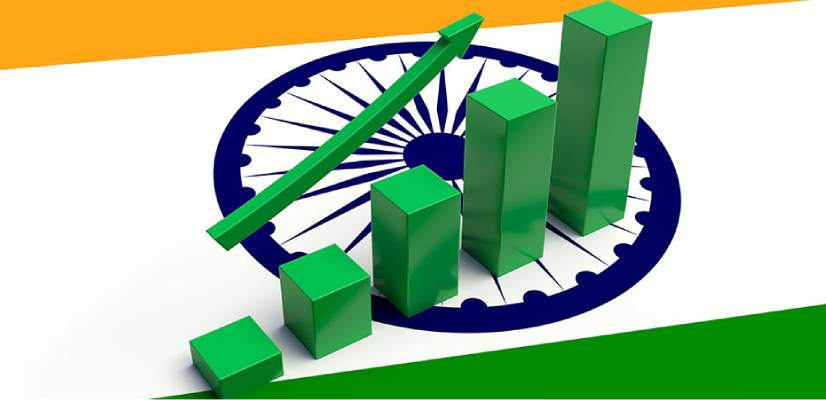Official data of Thursday showed India’s consumer inflation surged to an eight-year high of 7.79% in April 2022, busting the Reserve Bank of India’s (RBI) so-called tolerable limit of 6% for the 4 direct months. Food inflation, which is driving the rise in retail inflation, rose by 8.38%, the highest so far in this financial year.
Data from the Department for Promotion of Industry and Internal Trade (DPIIT). Wholesale inflation in India rose to 15.08% in April on an annual basis owing to higher fuel and energy costs,
“The high rate of inflation in April 2022 was primarily due to rise in prices of mineral oils, basic metals, crude petroleum & natural gas, food articles, non-food articles, food products and chemicals & chemical products etc. as compared to the corresponding month of the previous year,” said in a press release.
Food articles inflation in the month of April stood at 8.35%, up from 8.06% in March 2022. Fuel & power basket inflation rose to 38.66% from 34.52% in April. Manufactured products inflation rose marginally to 10.85% from 10.71% in March 2022.
Food Items Affected By Inflation
The Consumer Price Index (CPI) was based on inflation that rose mainly on account of increasing prices of essential food items like 'oils and fats', vegetables and protein-rich items such as 'meat and fish'.
Inflation in 'oils and fats' in March 2022 rose to 18.79% as the geopolitical crisis due to the Russia-Ukraine war pushed edible oil prices higher. Ukraine is a major exporter of sunflower oil, according to the Consumer Price Index (CPI) data.
In vegetables, inflation quickened to 11.64% in March 2022, while in 'meat and fish' the rate of price rise stood at 9.63 % compared to February 2022.
Inflation in the 'fuel and light' category was lower at 7.52 % in March from 8.73% in the preceding month.
The Reserve Bank of India (RBI) raised the retail inflation projection for the ongoing financial year to 5.7% from an earlier forecast of 4.5 %. However, it expects moderation in prices of cereals and pulses possibly on a record harvest of the winter season (rabi) crop.
According to the latest inflation numbers
- In rural India, retail prices rose higher (8.38%).
- In urban India, they rose 7.09%.
- Food prices too increased faster in the countryside at 8.5%, compared to 8.09% in urban areas.
- According to the CPI report, retail inflation in April exceeded 6% in 26 – or 74 %–of 35 states and UTs for which data was available.
- The rate was the highest in West Bengal, at 9.12%.
- Madhya Pradesh was 2 basis points behind at 9.10%, with Telangana rounding off the 9% plus the group at 9.02%.
- In Maharashtra, CPI inflation has been above 6 percent for five consecutive months
- In Haryana, it has been six straight months of 6% plus inflation.
- Western India, Dadra and Nagar Haveli are in the midst of a nine-month-long stretch of 6 % -plus inflation, the highest of any region in India.
Government:
During the Monetary Policy Committee (MPC) declared, RBI Governor Shaktikanta Das said about a moderating path for inflation during the ongoing financial year 2022-23.
On the food price front, possibly recording the Rabi harvest would help to keep domestic prices of cereals and pulses in check, However, global factors such as the loss of wheat supply from the Black Sea region and the unprecedented high international prices of wheat could put a floor under domestic wheat prices the RBI governor said.
Edible oil price pressures are likely to remain elevated in the near term due to export restrictions by key producers as well as loss of supply from the Black Sea region, the RBI Governor said.
According to the RBI governor, Feed cost pressures could continue due to global supply shortages, which could also have a spillover impact on poultry, milk and dairy product costs.
"Taking into account these factors and on the assumption of a normal monsoon in 2022 and an average crude oil price (Indian basket) of US $ 100 per barrel, inflation is now projected at 5.7% in 2022-23, with Q1 at 6.3%; Q2 at 5.8%; Q3 at 5.4%; and Q4 at 5.1%," the RBI governor said.
Impact On India's Economy
Rising consumer inflation has increased the cost of living for average Indian middle-class households to ‘down trade’ their purchases, who are paying higher prices for a range of commodities, from fuel, electronics and transport to essential food items.
In February, retail inflation had risen by 6.07%. In March it rose by 6.95%. The latest jump in prices is higher than what most analysts were expecting.
The government collects retail price data from selected 1,114 urban markets and 1,181 villages covering all states to gauge retail inflation, which directly impacts people’s income and the country's economic growth.
Impact On Other Countries
The Russian invasion of Ukraine and the US Fed’s withdrawal of the easy money policy has had a bearing on domestic prices in India.
Thursday’s data showed the Black Sea conflict, along with Indonesia’s ban on cooking palm oil exports, quickened inflation in fats and oils to a record 17.28%. India meets 2:3 of its edible oil demand through imports. Vegetable prices rose 15.41% from a year ago against an increase of 11.64% in April, while proteins fell to 6.97, against a rise of 9.6% in March.
Global shocks plunged the Indian rupee to a new low Thursday, as worries of runaway inflation mounted. A falling rupee increases inflation by making imports costlier, which will likely put more pressure on the central bank to stem the currency’s sliding value.
Global drive the Indian rupee to a new low Thursday, as worries of runaway inflation mount. A falling rupee increases inflation by making import prices higher, which is possible to put more impact on the central bank to the currency’s sliding value.
What Is The Rate Of Inflation?
The rate of inflation based on the consumer price index (CPI) tracks the change in retail prices of goods and services which households purchase for their daily consumption.
To measure inflation, you estimate how much CPI has increased in terms of percentage change over the same time during the previous year. If prices have fallen, it is known as negative inflation. The Central Bank (RBI) pays very close attention to this figure in its role of maintaining price stability in the economy of the country.
The CPI monitors retail prices at a certain level for a particular commodity; the price movement of goods and services at rural, urban and all-India levels. The change in the price index over a duration of time is referred to as CPI-based inflation or retail inflation.
How is CPI Calculated (CPI formula)?
To calculate CPI, 100 is multiplied by the fraction of the cost amount of the current period and the base period.
CPI formula: (Price of the basket in current period / Price of the basket in base period) x 100
Inflation Rate: History of past 8 years
- Inflation rate for 2020 was 6.62%, a 2.9% increase from 2019.
- Inflation rate for 2019 was 3.72%, a 0.22% decline from 2018.
- Inflation rate for 2018 was 3.95%, a 0.62% increase from 2017.
- Inflation rate for 2017 was 3.33%, a 1.62% decline from 2016.
- The inflation rate in India averaged 5.99% from 2012 until 2022, reaching an all-time high of 12.17% in November 2013 and a record low of 1.54% in June 2017.
- Consumer Price Index-Combined (CPI-C) inflation in India moderated to 5.2% in 2021-22 (April-December) from 6.6% in the corresponding duration of 2020-21 and was recorded at 5.6% in December 2021.




